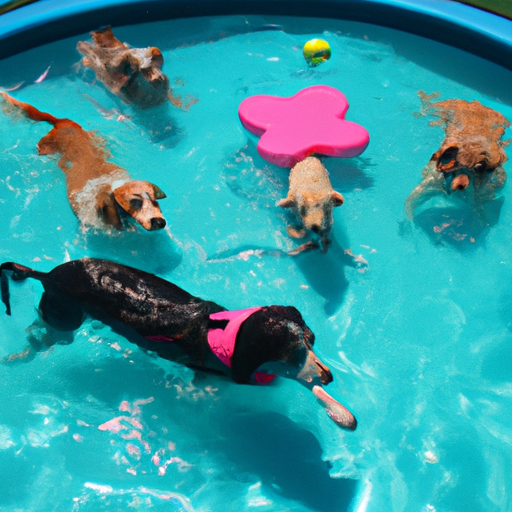Just like humans, dogs can also enjoy the refreshing and invigorating effects of a good swim. However, not all dogs are natural swimmers, and in some cases, they may even be afraid of the water. If you’re looking to introduce your canine buddy to the joys of swimming, this comprehensive guide will provide you with step-by-step instructions and tips on how to get dogs to swim.
- Table of contents
- Understanding Your Dog’s Breed
- Introducing Your Dog to Water
- Training Your Dog to Swim
- Safety Measures for Dog Swimming
-
Key Takeaways
- Not all dogs are natural swimmers.
- Gradual introduction to water is key.
- Safety measures are essential.
- Patience and positive reinforcement are crucial.
Understanding Your Dog’s Breed
Before you get your dog into the water, it’s important to understand their breed’s affinity with swimming. For instance, breeds like the Labrador Retriever and the Newfoundland are natural swimmers, thanks to their webbed feet and water-resistant coats. On the other hand, breeds like Bulldogs and Pugs, with their brachycephalic (flat-faced) features, might find swimming difficult and might even be at risk of drowning.
A good resource to understand your dog’s swimming abilities is available at American Kennel Club. Here’s an interesting article on OneTopDog that talks about the best dog breeds for swimming.
Introducing Your Dog to Water
The key to getting dogs to swim is a slow and gradual introduction to water. Start by playing near a shallow body of water. Allow your dog to explore and get their paws wet. A kiddie pool can be a great starting point. Gradually increase the water depth as your dog gets more comfortable.
Remember, it’s essential to stay calm and patient. The last thing you want is to create a negative association with water. Here are some steps to follow:
- Start with shallow water: Let your dog get used to the feeling of wet paws.
- Gradually increase water depth: Once your dog is comfortable, introduce them to deeper water.
- Be there with them: Join them in the water to offer comfort and assurance.
Training Your Dog to Swim
Once your dog is comfortable around water, it’s time to teach them to swim. Always stay close to ensure their safety. Use toys or treats to encourage them to paddle and move in the water.
It’s important to note that dogs, like humans, have different learning speeds. Some might take to swimming immediately, while others might need more time. Patience, encouragement, and positive reinforcement are key.
Here are some tips to train your dog to swim:
- Use a life jacket: A dog life jacket provides buoyancy, making it easier for your dog to stay afloat. It also gives you something to hold onto during the training.
- Teach them to enter and exit the water: Guide your dog to the best and easiest places to get in and out of the water. This ensures they can safely exit whenever they want.
- Use toys and treats: Encourage your dog to paddle towards a toy or treat.
Here’s a useful guide on OneTopDog with more detailed information on training your dog to swim.
Safety Measures for Dog Swimming
Just like we wouldn’t let a child swim unsupervised, the same goes for our furry friends. Here are some safety measures to consider:
- Never leave your dog unsupervised near water: Even if your dog is a good swimmer, accidents can happen.
- Invest in a good-quality dog life jacket: This is especially important for breeds that are not natural swimmers.
- Keep the water clean: Dirty water can cause infections and diseases.
- Check the water temperature: Very cold water can cause hypothermia, while very warm water can lead to overheating.
For more water safety tips for your dog, check out this article.
Frequently Asked Questions
Q: Can all dogs swim?
A: No, not all dogs can swim. Some breeds are better suited to swimming than others. Always supervise your dog in the water and consider a doggy life jacket for extra safety.
Q: How can I make my dog comfortable in the water?
A: Start slow. Let your dog explore shallow water first and gradually increase the depth. Be patient and use positive reinforcement.
Q: Is it safe for my dog to swim in a pool?
A: Yes, but make sure the water is clean and the temperature is safe. Also, ensure your dog knows how to get in and out of the pool safely.
Learning how to get dogs to swim can be a fun and rewarding experience for both of you. Remember, patience is key. Your furry friend will soon be splashing around with the best of them. Happy swimming!



